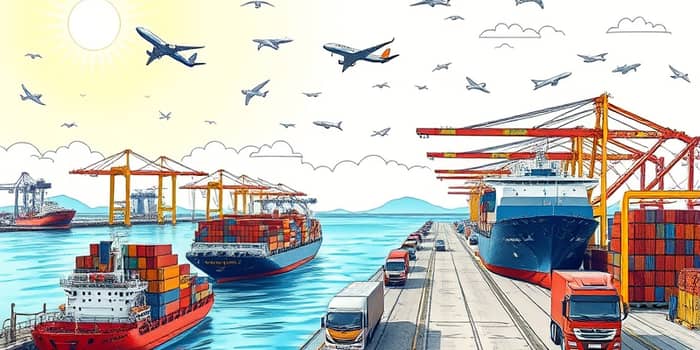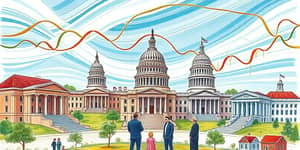
In April 2025, the US trade deficit plunged to $61.6 billion, its lowest point since September 2023. This remarkable turnaround from a staggering $138.3 billion shortfall in March underscores a profound shift in global trade dynamics. Against the backdrop of earlier record gaps, businesses, policymakers, and investors are taking note of the trends steering America’s external accounts toward greater balance.
As of February 2025, exports jumped 2.9% to $278.5 billion, fueled by gains in nonmonetary gold, passenger cars, computer accessories, trucks, buses, and civilian aircraft. Imports in the same month remained near record highs, easing only for finished metal shapes, gold, and aircraft, while rising for cell phones and computers.
After anticipating new tariffs, many firms front-loaded purchases, which briefly inflated import figures. When those shipments cleared, the deficit contracted sharply.
Several forces have propelled American exports upward, compressing the trade gap:
Global economies recovering from the pandemic and supply-chain recalibrations have leaned on American innovation and quality, driving sustained growth in several categories.
Tariffs and protectionist measures have left an indelible mark on recent trade patterns. Anticipation of duties led to import spikes as companies stocked up before levies took effect. Once the initial wave subsided, imports retreated, narrowing the deficit.
Retaliatory measures and industrial subsidies worldwide continue to inject uncertainty into the picture. As nations wield tools like tariffs to shield domestic industries, firms must navigate a more complex policy environment—one where timing and strategy can yield short-term advantages but also heighten long-term risks.
The headline narrowing masks divergent stories across partners. In April, deficits fell sharply with China, Switzerland, and Canada. Yet gaps widened with the European Union, Mexico, and Vietnam, reflecting shifts in consumption, regulatory changes, and freight costs.
Sector by sector, agricultural and food exports have surged into recovering markets, while energy shipments lag as global pricing and supply concerns persist. Tech and transport equipment remain standout winners, underpinned by continued innovation and aftermarket services.
A narrowing trade deficit carries a host of macroeconomic meanings. It can signal increased international competitiveness when achieved through productivity and innovation. Investors may view it as a sign of external strength, potentially supporting the currency and lowering borrowing costs.
Yet caution is warranted. Some of the swing results from temporary inventory restocking effects rather than sustainable demand shifts. Policymakers and businesses alike must discern which elements of the rebound are structural versus cyclical.
Worldwide trade flows remain at a crossroads. Protectionist sentiments and industrial policies are converging with goals around security and climate, especially in US-EU discussions. China’s stimulus efforts aim to shore up exports, even as geopolitical frictions persist.
These global trends suggest that America’s export successes, while welcome, are part of a broader tapestry of changing trade relationships.
America’s recent progress in narrowing its trade deficit demonstrates the power of innovative export strategies and targeted policy actions. Businesses can build on this momentum by diversifying markets, investing in high-value sectors, and staying agile amid evolving regulations.
For policymakers, the lesson is to balance protective measures with open-market incentives, ensuring that gains are not merely transient. Continued collaboration on trade agreements, infrastructure modernization, and currency stability will be key.
As 2025 unfolds, stakeholders must remain vigilant. Persistent debates over deficits reflect deeper questions about savings, investment, and national priorities. By understanding the forces at play and embracing both innovation and discipline, the United States can chart a course toward more sustainable, balanced trade—a goal that benefits businesses, workers, and consumers alike.
References













